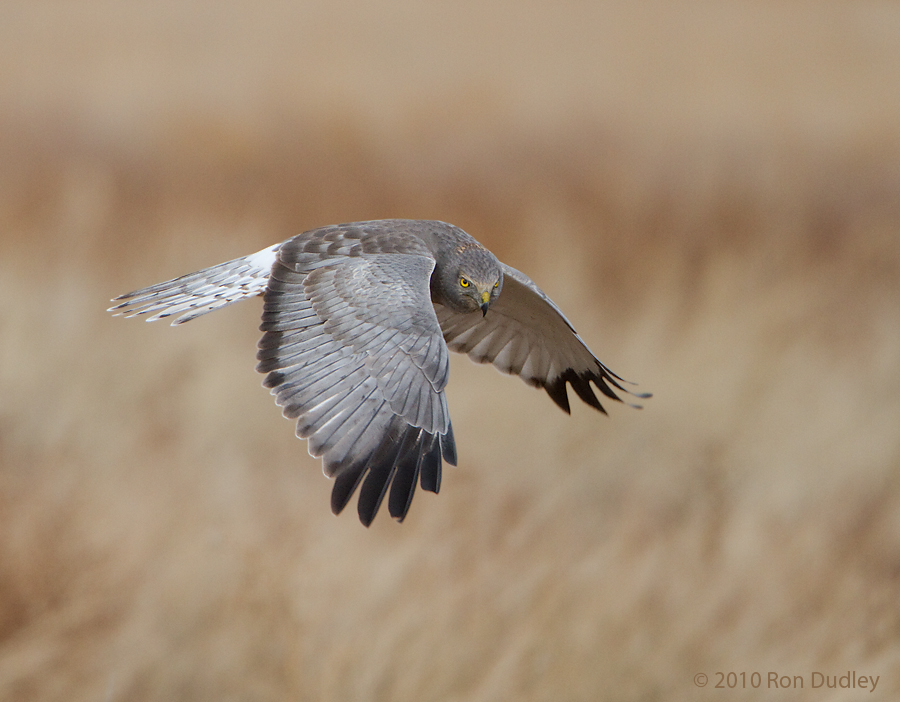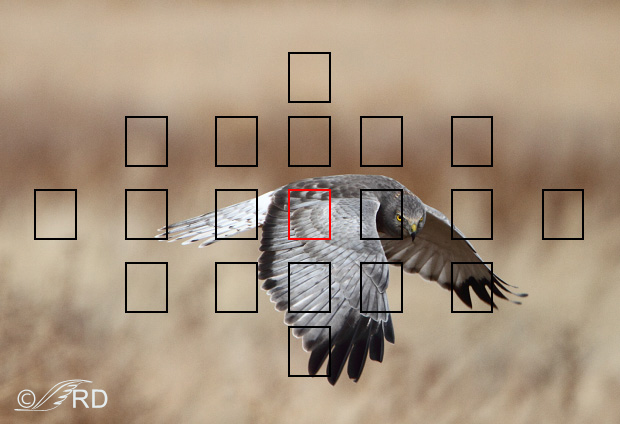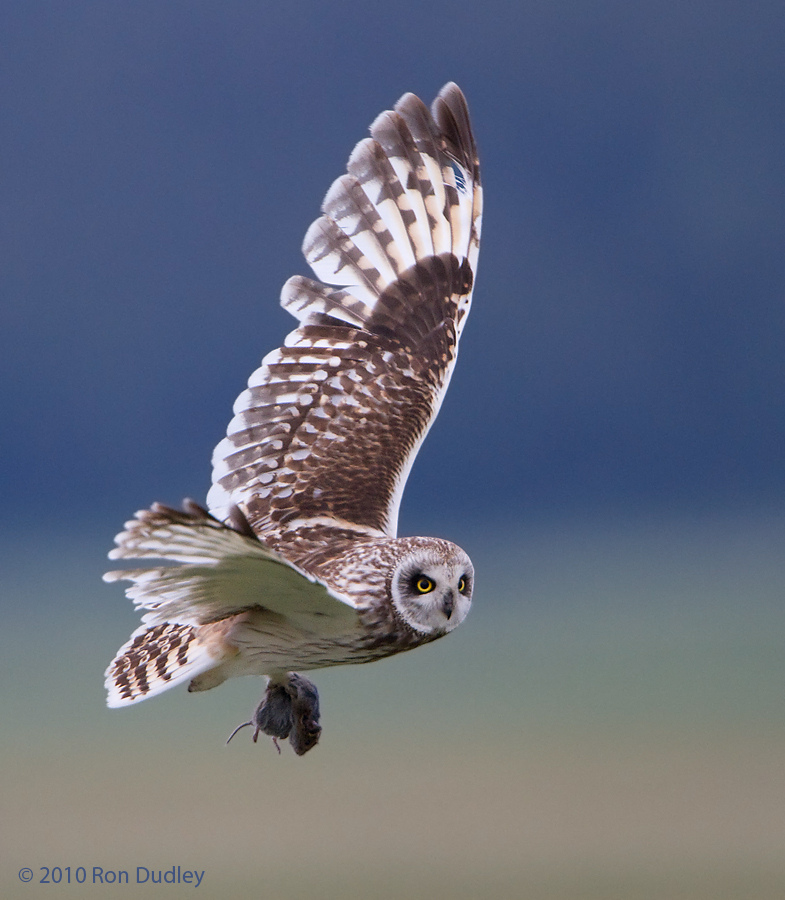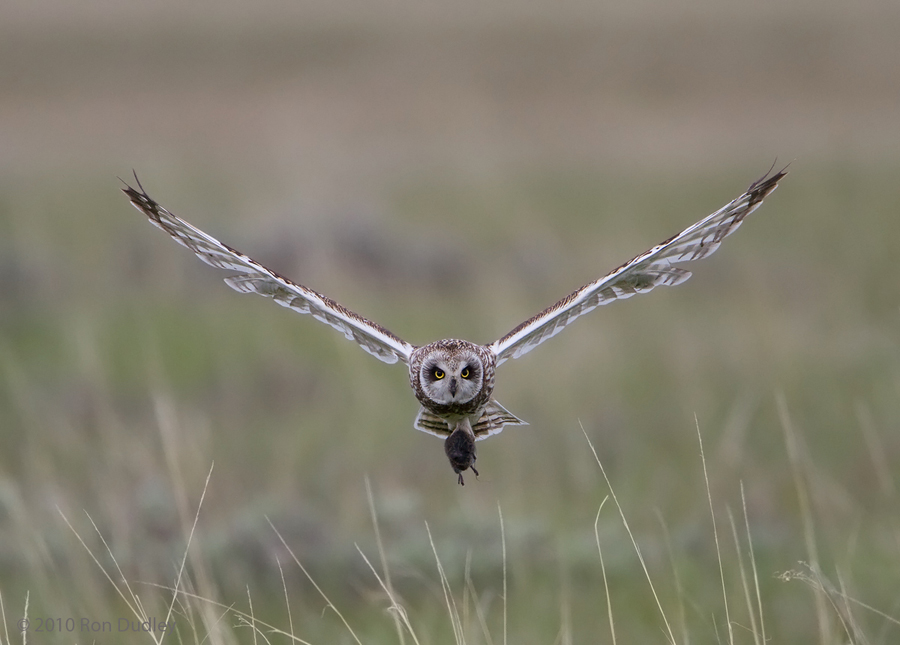Photographing birds in flight in relatively low light (dusk, dawn, cloudy conditions etc) isn’t easy. In addition to the expected challenge of locking focus onto a fast and often erratically moving target, in low light you have the problem of getting enough shutter speed to get a moving subject sharp. A potential solution to the problem is “opening up” – increasing the size of the aperture, which is the same as reducing the f-number – say as in changing your setting from f/7.1 to f/5.6. This lets more light into the camera in the same amount of time, allowing for an increase in shutter speed to freeze the motion of the bird. Opening up however has another effect – reducing depth of field, so less of your subject is likely to be tack sharp.
Another potential solution is to increase ISO. Increasing ISO in digital cameras has the effect of seeming to increase the sensitivity of the camera’s sensor to light so that faster shutter speeds can be used but the downside to increasing ISO is that it can increase digital noise in the image.
Sometimes in bird photography fantastic opportunities with birds in flight present themselves in less than ideal light. Your best chance at an acceptable image under those conditions is to understand the interplay between your camera settings – how changing aperture affects shutter speed and depth of field and how changing ISO affects shutter speed and the production of digital noise.
Male Northern Harrier, 1/1250 @ f/11, ISO 800
It’s not often I get a close up opportunity like this with a male Northern Harrier but it was a cloudy day and I didn’t have much light. ISO 800 is about as high as I dare go with my Canon 7D or it just produces too much noise. I can not open up any more than f/5.6 with the combination of my camera with the 500mm lens and 1.4 teleconvertor. This combo gave me a shutter speed of 1/1250 which was fast enough for this relatively slow-moving and large raptor. With a faster moving smaller bird I’d have been out of luck – there just wouldn’t have been enough shutter speed to get it sharp. At f/5.6 I think I was lucky to have enough depth of field to get both the head and the tail relatively sharp.
Male Northern Harrier, 1/1250 @ f/5.6, ISO 800
This image was taken several minutes before the previous one and in fact may be the same bird. I shoot in aperture priority and had the same aperture and ISO settings for both shots. Since the light intensity was the same for both images I got 1/1250 sec shutter speed in each instance. The difference here is that the tip of the far wing is soft. With the bird turned sideways to me and that large wingspan it was too much for f/5.6 to keep sharp.
Focus point
Using Zoombrowser I can display my focus points. Here you can see that my active focus point for this shot was just behind the shoulder on the right wing which explains why I had more depth of field and resulting sharpness on the right wing than I did on the left, especially at the tip.
Male Short-eared Owl with vole, 1/1000 @ f/5.6, ISO 800
I traveled many hundreds of miles and invested most of a week in finding and photographing a family of Short-eared Owls this past summer but it was cloudy most of the time I was there so the available light for flight shots was marginal at best. Again I set my aperture at f/5.6, my ISO at 800 and hoped for enough shutter speed and as little noise as possible. Here I got only 1/1000 sec for shutter speed and frankly I’m surprised that it’s as sharp as it is but he was banking and carrying prey and I suspect that both slowed him down a little.
Male Short-eared Owl with vole, head on – 1/1250 @ f/5.6, ISO 800
Same bird, different day and slightly improved light. Here I had enough light that the shutter speed was bumped up to 1/1250 at the same aperture and ISO settings as in the previous image. That increase in light and resulting faster shutter speed, combined with the head on pose that presents the wings horizontally resulted in an image where the entire bird was relatively sharp.
So that’s what I do. When shooting relatively large and slower flying birds in flight in low light I’ll usually set my aperture at f/5.6, my ISO at 800 and then shoot lots of images and hope for the best. If your camera handles high ISO’s better than the 7D then you could likely go higher with your ISO setting without introducing too much digital noise and get faster shutter speeds than I got here under these lighting conditions.
Ron







More amazing photos, that short eared owl with prey is unbelievable! when shooting the gliders like short eared and harriers do you prefer to use AF-Single of Continuous Auto focus?
Thanks, James. I always use A1-Servo, continuous AF.
Hi Ron
Some nice stuff , i’ve been trying to photograph Nightjars lately , and found your site while trying to find other’s working in low light conditions.
as you say the Canon 7d above Iso 800 doesn’t produce the best results.have you any experience of using lamps ?
Regards
Tim
Hi Tim,
No, I don’t. I never use flash on birds.
I have been spending some time at a local grassland hoping to learn something about shooting the short-eared owls and hawks that patrol the area at sundown. My question refers to how to store your settings. I tried placing them in C3 so that turning the dial to C3 would re-set the camera settings for flight. Against the sky the focus follows the bird with much flashing of red lights but if the bird passes a tree the focus is lost. Start over. If a bird were to land 40 feet away I would want to switch to my familiar single-shot setting. The requires twisting the dial; impossible with gloves on. I don’t get very many shots with all this action going on. Do you put in the settings above and stick with them all the time? How are you hiding yourself? Your shots look great.
Canon 5D MkIII, 500mm + 1.4, Flickr – leehunterphotos
Lee, I don’t “store” my settings, instead I adjust in increments as conditions change. I’m nearly always shooting from my pickup – using the vehicle as a mobile blind so I usually have at least one hand that is gloveless to adjust settings.
So you use AI Servo with image stabilization off to get a bead on the bird?
Hi i have just seen your fantastic photos and good info.. i was wondering if you could help me a little
i am new to this and i have a family of kestral living in a nest box in a barn.. the are just about to fly and i would like to try a capture this also the parents feeding them.. my equipment is a cannon eos30d with a cannon 100-400 l is ultrasonic.and tripod the prblem i have is the barn is open on all sides and the box is in the apex of the roof.. what would be my staring point for settings to get the right shots. i will only have very little time as the adults are only there very briefley with mice to feed the chicks.. can you help please? Many thanks Chris
Thank you for the nice words Chris. Sorry I’m a little late in replying as I’ve been on a photo/camping trip for the last five days and just got home. I’ll email a response to your questions by tomorrow.
Great info thanks for sharing and you have taken some stunning photos………
Reg Aupperle aka Brobones
Really enjoy your blog and the accompanying images. Thanks.